When will the Fed stop raising rates? The time could be coming soon
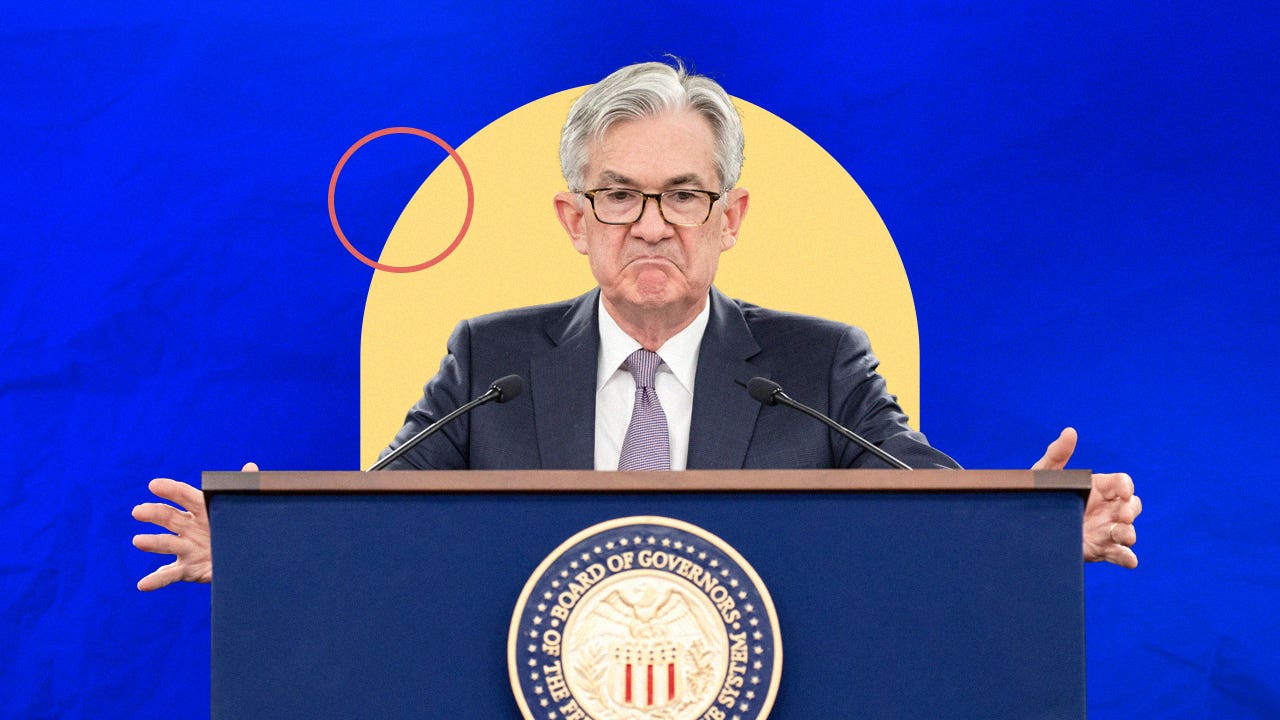
The Bankrate promise
At Bankrate we strive to help you make smarter financial decisions. While we adhere to strict , this post may contain references to products from our partners. Here's an explanation for .
The Fed signaled at its final rate meeting of the year that it’s most likely done raising interest rates. For a more up-to-date analysis on the latest Fed news, please follow our most recent coverage here.
Raising interest rates to deliberately slow the U.S. economy isn’t a job for the faint of heart, but the next test for the Federal Reserve could make even that challenging task look simple.
After lifting interest rates last year at a pace not seen since the last time inflation soared this much 40 years ago, Fed officials must soon decide when it’s time to stop making it more expensive to borrow money.
A pause in hiking rates may be around the corner, and the debate about when to stop raising interest rates could be picking up soon. Officials in May raised rates by a quarter of a percentage point to a new target range of 5-5.25 percent, the highest in nearly 16 years.
The largest majority of officials (10 policymakers) projected back in March that’s where borrowing costs will peak. Signaling an upcoming pause even more directly, Fed officials deleted a key phrase about expecting “some additional policy firming” from their post-meeting statement for May.
“We may not be far off,” said Fed Chair Jerome Powell at the May meeting press conference, referring to the Fed’s peak interest rate. “We’re possibly even at that level. … We will make that determination meeting by meeting, based on the totality of incoming data and their implications for the outlook for economic activity and inflation.”
Where the Fed takes rates could have grave implications for Americans’ purchasing power, the job market, the U.S. economy — and now, banks within the U.S. and abroad. Economists wondered whether the Fed’s tightening cycle would claim the red-hot labor market as its first victim. Then Silicon Valley Bank and Signature Bank collapsed. Nearly two months later, First Republic Bank became the next casualty.
Higher rates are like a blunt instrument; they only work at cooling price pressures by slowing demand across the board. It often means something within the U.S. economy can break along with inflation.
Even amid the ongoing turmoil, Fed officials aren’t committing to a pause just yet. Important to the Fed’s next moves will be incoming data on inflation and employment. Labor Department data shows layoffs edged up in February, while fewer Americans are quitting their positions — a sign of wavering confidence in the job market. Hiring also continued slowing in March, but employers are still adding jobs at a robust pace, nearly 1.4 times faster than the pre-pandemic pace from 2019.
Will this be the last rate hike? In true central bank fashion, the Fed left themselves a path to pause, or to hike rates further if necessary.— Greg McBride, CFA, Bankrate Chief Financial Analyst
When will the Fed stop hiking rates? Rates may be near that level now
Economists have long expected the Fed would likely stop raising interest rates at some point in 2023, but “where” rates peak — a level known as the “terminal” rate — is actually more important than “when.”
Just seven Fed officials see rates rising higher than they are now, according to officials’ individual projections from March. Three officials project one more rate hike, while another three officials project two more. One policymaker sees three more rate hikes. Policymakers won’t update those estimates until their next rate-setting meeting in June, meaning Powell’s comments at the Fed’s press conference are the best indicators of where officials currently stand.
Officials are watching incoming economic data, but they’re also keeping an eye on just how much the failures of Silicon Valley Bank, Signature Bank and First Republic are hitting the economy. Those major collapses — among the largest in U.S. history — could keep the U.S. central bank from slowing the economy any more.
But those failures could do some of the Fed’s work for it. A tightening in financial conditions immediately after SVB and Signature failed in March was equivalent to six quarter-point rate hikes, economists at Apollo Academy estimated. Tightening that’s left up to current market conditions, however, can often reverse, and a recent gauge from the Chicago Fed shows some of the credit crunch that occurred in March has improved.
“Policy has got to be tight enough to bring inflation down to 2 percent over time,” Powell said. “It doesn’t all have to come from rate hikes. It can come from tighter credit conditions. It’s highly uncertain how long the situation will be sustained or how.”
Banks had already been raising their lending standards well before those failures. Financial institutions tightened standards for both business and household loans in the first three months of 2023, including for commercial real estate and mortgages, as rates climbed higher and banking troubles persisted, a senior loan officer survey from the Fed showed in April.
Fewer loans and reduced lending could take some steam away from the economy. One example: Regional and mid-sized banks facing the biggest stress are key engines for commercial real estate loans, though estimates regarding how much differ. One estimate from Goldman Sachs suggests banks with less than $250 billion in assets make up for half of all U.S. commercial and industrial loans, along with 80 percent of commercial real estate lending. A separate analysis from Moody’s estimates those same banks make up about 30 percent of all commercial real estate debt.
A particular focus “going forward is going to be what’s happening with credit tightening,” Powell said in May. “Are small- and medium-sized banks tightening credit standards, and is that having an effect on loans, on lending?”
Uncertain economy, inflation and bank failures complicates Fed’s rate outlook
The difficulty with forecasting is that the U.S. economy and inflation hasn’t evolved as officials expect. In March 2022, the Fed only saw prices rising 4.3 percent from a year ago. They ended up jumping 6.3 percent, according to the Department of Commerce.
Powell reiterated the Fed would be willing to adjust its forecasts depending on how the U.S. economy evolves. In other words, a deeper banking crisis that weighs on lending more forcefully may underscore the need to stop raising rates — at least for now. If the turbulence calms and inflation remains hot, even more rate hikes may be required.
“Powell can do one of two things: Step on the gas or step on the brake,” says Robert Barbera, director of the Center for Financial Economics at Johns Hopkins University. “Except you can’t see in front of you because the windshield is covered in black paint; the only thing you can do is look in the rearview mirror. You’re stepping on the gas or the brake as a consequence of what you know was happening, rather than what you know will be happening.”
The recent banking crisis may underscore even more to the Fed that it’s time to watch and see just how much rate hikes are impacting the economy.
Monetary policy can take a year, if not more, to fully impact the U.S. economy. Lenders, for example, often adjust their variable-rate loans within one to two months of a Fed rate hike. That means it can take a while for a consumer to feel the pinch from higher borrowing rates — and for that consumer to eventually adjust their spending habits. The Fed has also been raising interest rates at an extraordinary speed, leading to increased volatility for loan rates.
“It’s hard to be confident about your outlook,” says Bill English, finance professor at the Yale School of Management who spent 20 years at the Fed. “The best you can do is balance the risks.”
Those differing expectations could be because investors expect a much greater economic slowdown — and possibly a recession — than the Fed. The Monday after Silicon Valley Bank collapsed, the 2-year Treasury yield plunged by the most in a single day since the stock market crash known as “Black Monday” in 1987, as market participants dumped riskier investments in a flight for safety with Treasurys.
“I think it’s still possible,” Powell said in May, referring to avoiding a recession. “The case of avoiding a recession is, in my view, more likely than that of having a recession.”
Why the Fed’s peak rate matters for consumers
Savers looking to maximize their earnings will want to pay close attention to the Fed’s terminal rate. It might indicate when yields will hit their ceiling. Yields on certificates of deposit (CD) with maturities of one year or longer have already peaked and are bound to start drifting lower once it’s clear the Fed has officially stepped to the sidelines.
As with anything in personal finance, it pays to shop around — but that’s even more true with your savings when inflation remains uncomfortably high. Savings annual percentage yields (APYs) are beginning to hit 5 percent, in line with how fast consumer prices are rising.
A rate of 5 percent is nearly 21 times the national average — and 500 times what big banks, including Chase and Bank of America, are offering. A high-yield savings account could be the difference between earning just a few pennies versus hundreds of dollars, depending on how much cash you keep in savings. Your money is safe while it generates those returns when you bank with an FDIC-insured institution.
Figuring out when the Fed will stop hiking rates is also important because of the debate that often follows: When to start cutting.
Borrowers will certainly be holding their breath for that moment, especially would-be homebuyers who have been priced out of an already expensive housing market long before officials first started hiking rates at a breakneck pace. The 30-year fixed-rate mortgage more than doubled in 2022, hitting a 20-year high of 7.12 percent on Oct. 28. It’s since fallen to 6.52 percent as of May 3, according to Bankrate data.
The drop illustrates that mortgage rates certainly don’t have to wait for the Fed’s word to start falling. Influencing the key home loan even more than the Fed is the 10-year Treasury yield. That key rate and then the 30-year fixed-rate mortgage could fall like dominoes if investors turn to thinking inflation has peaked — and instead, start to fret about a recession or a credit crisis.
A Bankrate survey of economists showed a 64 percent chance of a recession at some point in 2023.
Fed officials, however, don’t think rate cuts could happen as quickly as investors. Market participants see 75 basis points worth of cuts this year starting at the Fed’s September meeting, according to CME Group’s FedWatch tool. No Fed official, meanwhile, projects rate cuts earlier than 2024, policymakers’ projections show. Economists in Bankrate’s First-Quarter Economic Indicator poll see a similar outlook, with 18 percent estimating the Fed could cut rates this year.
“We on the committee have a view that inflation is going to come down, not so quickly,” Powell said at the Fed’s May press conference. “In that world, if that forecast is broadly right, it would not be appropriate to cut rates, and we won’t cut rates.”
The Fed isn’t shy about the consequences of higher rates. Fed staff noted that they’re forecasting a “mild” recession to begin this year, with a recovery taking a subsequent two years. Powell said in May that it’s not his own base case — that the economy will avoid a recession — but has long noted the process won’t be without pain.
Even the best projections from policymakers suggest unemployment could hit 4 percent by the end of 2024 — a 0.6 percentage point gain from its current 3.4 percent level. That’s never happened without the U.S. economy being in a recession, though it would be the smallest jump in joblessness of any modern downturn.
“No one really knows where it’s going to end. The path is very narrow, and the Fed has to pull a rabbit out of their hat [to avoid a recession],” says Ryan Sweet, chief economist at Oxford Economics. “They’re going to break inflation no matter what. The risk is that they do too much.”
Related Articles
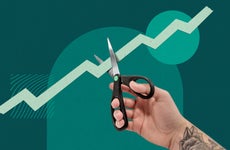
When will the Fed cut interest rates? Not so fast, some officials say, as inflation stays stubborn
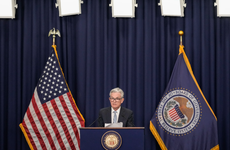
Fed leaves interest rates unchanged, suggests it is not ready to begin cuts
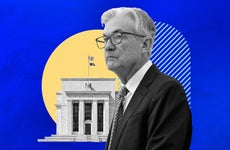
Will the Fed raise interest rates one more time this year? Some economists aren’t convinced
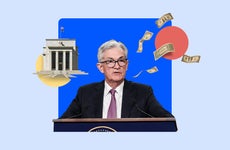
Survey: Fed won’t begin cutting interest rates until 2024 as officials keep tackling inflation